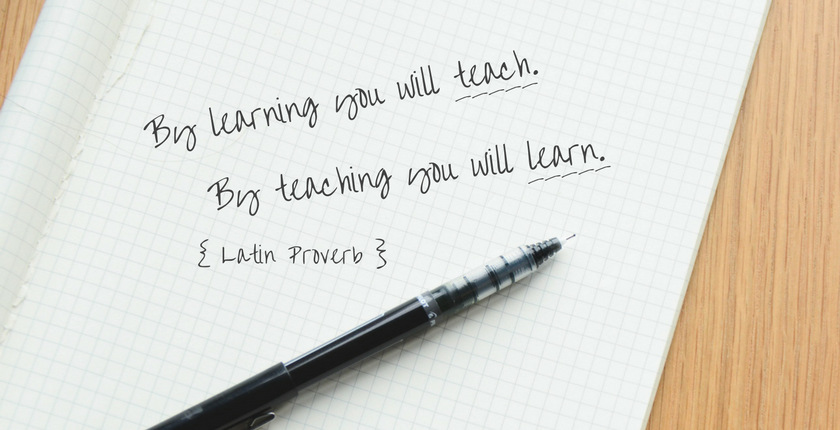[vc_row][vc_column][vc_column_text]By Shari Maser, Off-Campus Program Advisor
I played two characters: the “perfect” student, Mary Ingalls, and the “class clown,” Johnny Johnson. My daughter played Laura Ingalls, the schoolteacher. (Using a bit of revisionist history, we made Mary the younger sister for the purposes of our Little House on the Prairie role-playing game, and we invented Johnny.) Mary knew the right answers to the math problems, every time, but Johnny made all kinds of mistakes. My daughter, now the teacher, patiently explained to him how to correct his errors. She also helped him understand the underlying concepts, such as why 85 minus 3 doesn’t work the same way if you align the 3 under the 8 instead of the 5. And she tried to help him see why he should care about that just as much as he cared about hunting wild turkeys. She even taught him better manners!
The process of teaching reinforces learning. Explaining a concept, leading a discussion or activity, and providing meaningful feedback all require thoughtful interaction, so when your child is playing the role of the teacher, he or she is guaranteed to be actively engaged in the learning process. For this reason, it’s no surprise research confirms the positive impact that letting the child be the teacher has a on learning outcomes for everyone involved.
There are many ways to give students the chance to teach. Here are two examples:
- My friend Lisa used to buy Delta Education’s Science in a Nutshell kits, which come complete with activity guides and all the necessary supplies for several hands-on activities and journaling exercises related to the chosen topic, such as “Clever Levers.” Whenever a kit arrived in the mail, Lisa would let her daughter Maddy open it and take as long as she needed to figure it out—with help from her dad or the Internet, if necessary. Then Maddy called her class (mom and an array of stuffed animals) to order, and facilitated the lessons that came in the kit. Of course, as Maddy taught the lessons, Lisa could easily see which concepts she had mastered, what knowledge gaps existed, and what new curiosities the kit had inspired; and they could extend their unit studies accordingly. When I visited, Maddy often told me stories about her mom’s struggles and successes in the learning process and about the new concepts or skills they had learned together. Being the teacher built Maddy’s confidence, made learning fun and memorable, and gave her an enjoyable way to bond with her mom.
- One of my students shared this description of the intergenerational Reader’s Theatre group his family belongs to: “According to William Shakespeare, the purpose of playing is to ‘hold the mirror up to Nature.’ Reading aloud, together with a company of fellow actors, we consider whether seven plays may succeed in that mission. The plays have overlapping themes, developed in a variety of different contexts.” Every youth and adult member of the group has a chance to be the discussion leader during the course of the year. In addition, each participant always prepares thoroughly in advance of the read-alouds, divvying up assignments to investigate such questions as the biography of the playwright, a particular character’s motivation, the historical context of the play, or the underlying themes. My student says the group is also “creating a Wall Collage which includes favorite quotes, images, and drawings made in response to each of the plays.” Taking turns facilitating the group discussions lets each student reap the benefits of playing the role of teacher.
Whether it’s through a student-led book club, a robotics team that uses older students to mentor younger students, a Japanese language study group, a student teaching a parent how to draw or skateboard—the possibilities are endless. So, let your child be your teacher, or someone else’s teacher, and watch him or her learn!
Do you have any examples or tips to share about letting your child be the teacher? We’d love to hear your thoughts.[/vc_column_text][/vc_column][/vc_row]







